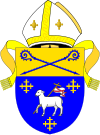
The Diocese of Växjö is one of 13 dioceses within the Lutheran Church of Sweden. Its episcopal see is located in the city of Växjö. The diocese was established in the 12th century as a Roman Catholic bishopric, but was taken over by the Church of Sweden as a result of the Protestant Reformation in Sweden.
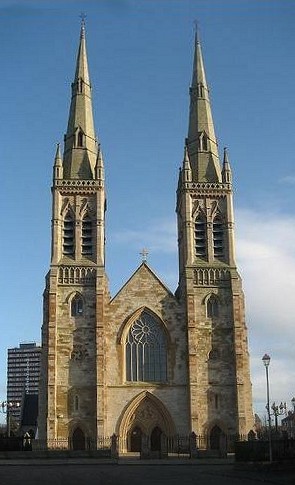
The Diocese of Down and Connor, is a Latin Church ecclesiastical territory or diocese of the Catholic Church in Northern Ireland. It is one of eight suffragan dioceses in the ecclesiastical province of the metropolitan Archdiocese of Armagh. Bishop Alan McGuckian is Bishop.
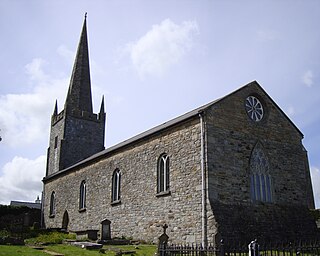
The Bishop of Killala is an episcopal title which takes its name after the village of Killala in County Mayo, Ireland. In the Roman Catholic Church it remains a separate title, but in the Church of Ireland it has been united with other bishoprics.

The Diocese of Connor is in the Province of Armagh of the Church of Ireland.
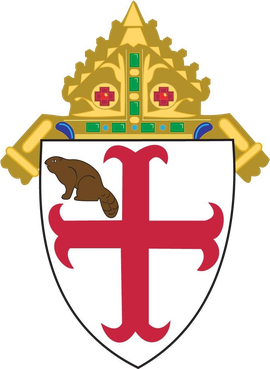
The Episcopal Diocese of Albany is a diocese of the Episcopal Church covering 19 counties in northeastern New York state. It was created in 1868 from a division of the Episcopal Diocese of New York.
The Bishop of Cloyne is an episcopal title that takes its name after the small town of Cloyne in County Cork, Republic of Ireland. In the Roman Catholic Church, it is a separate title; but, in the Church of Ireland, it has been united with other bishoprics.
The Bishop of Down and Connor is an episcopal title which takes its name from the town of Downpatrick and the village of Connor in Northern Ireland. The title is still used by the Catholic Church for the diocese of that name, but in the Church of Ireland it has been modified into other bishoprics.
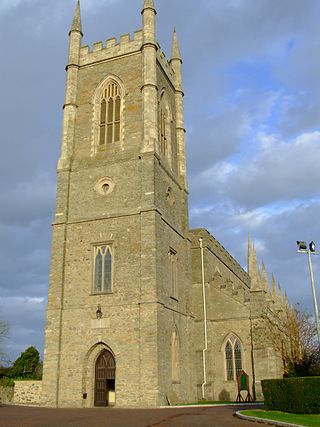
The Bishop of Down was an episcopal title which took its name from the town of Downpatrick in Northern Ireland. The bishop's seat (Cathedra) was located on the site of present cathedral church of the Holy and Undivided Trinity in the Church of Ireland.

Harold Creeth Miller is a retired Irish Anglican bishop. He served as bishop of the Diocese of Down and Dromore in the Church of Ireland. Coming from a Methodist background, he was elected bishop in 1997 and was considered to represent an evangelical position within the Church.
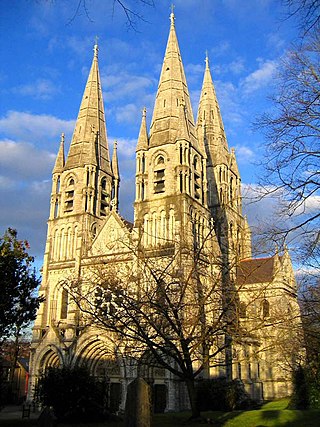
The Diocese of Cork, Cloyne and Ross, also referred to as the United Diocese of Cork, Cloyne and Ross, is a diocese in the Church of Ireland. The diocese is in the ecclesiastical province of Dublin. It is the see of the Bishop of Cork, Cloyne and Ross, the result of a combination of the bishoprics of Cork and Cloyne and Ross in 1583, the separation of Cork and Ross and Cloyne in 1660, and the re-combination of Cork and Ross and Cloyne in 1835.

The Diocese of Down and Dromore is a diocese of the Church of Ireland in the south east of Northern Ireland. It is in the ecclesiastical province of Armagh. The geographical remit of the diocese covers half of the City of Belfast to the east of the River Lagan and the part of County Armagh east of the River Bann and all of County Down.
The Bishop of Down and Dromore is the Ordinary of the Church of Ireland Diocese of Down and Dromore in the Province of Armagh. The diocese is situated in the north east of Ireland, which includes all of County Down, about half of the city of Belfast, and some parts of County Armagh east of the River Bann.
The Bishop of Down, Connor and Dromore was the Ordinary of the Church of Ireland diocese of Down, Connor and Dromore; comprising all County Down and County Antrim, including the city of Belfast.

Robert Bent Knox was the Church of Ireland Bishop of Down, Connor and Dromore from 1849 to 1886, and then Archbishop of Armagh and Primate of All Ireland from 1886 until his death.
The Bishop of Dromore is an episcopal title which takes its name after the original monastery of Dromore in County Down, Northern Ireland. In the Roman Catholic Church the title still continues as a separate bishopric, but in the Church of Ireland it has been united with other bishoprics.

The United Dioceses of Cashel and Ossory is a diocese of the Church of Ireland in the south-eastern part of Ireland that was formed from a merger of older dioceses in 1977. The diocese is in the ecclesiastical province of Dublin.
The Dean of Tuam is a post held in the Diocese of Tuam, as head of the cathedral chapter from after the creation of the diocese at the Synod of Rathbreasail in 1111.
The Roman Catholic Diocese of Connor was a Catholic diocese in Ireland which started as a territorial abbey circa 500, became a proper residential bishopric in 1111 and was merged into the Roman Catholic Diocese of Down in 1439.
George Thomas William Davison is a priest of the Church of Ireland. Since 2020, he has served as the Bishop of Connor.
